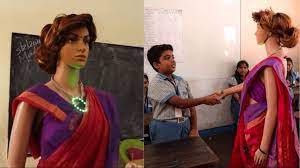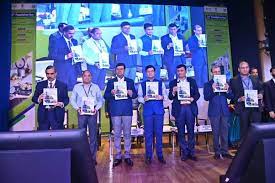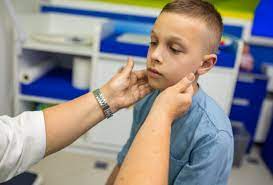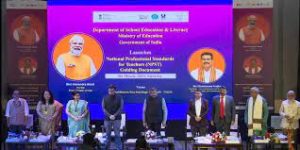Today’s Current Affairs: 11th Mar 2024 for UPSC IAS exams, State PSC exams, SSC CGL, State SSC, RRB, Railways, Banking Exam & IBPS, etc
Table of Contents
UNNATI – 2024:

The Union Cabinet approved the Uttar Poorva Transformative Industrialization Scheme, 2024 (UNNATI – 2024) for a duration of 10 years, to incentivize investors to set up new units or expand existing ones.
- The Uttar Poorva Transformative Industrialization Scheme (UNNATI – 2024) is a 10-year Central Sector Scheme aimed at fostering industrial development and employment generation in the Northeast Region (NER).
- Certain industries are kept on a positive list, while others are on a negative list to maintain environmental balance.
- Scheme Period: 10 years with an additional 8 years for committed liabilities
- Eligibility: All new industrial units and expanding units
- It offers incentives to new and expanding industrial units, with a maximum benefit of Rs 250 crore per unit
- Categorization of Districts Zone A (Industrially Advanced Districts) & Zone B (Industrially Backward Districts)
- Implementation Agency: Department for Promotion of Industry and Internal Trade (DPIIT)
IRIS: India’s First AI Teacher Robot

A school in Thiruvananthapuram, Kerala has unveiled a groundbreaking innovation in education with the introduction of India’s first Generative Artificial Intelligence(AI) teacher robot named ‘Iris’.
- Developed in collaboration with Makerlabs Edutech, Iris aims to transform traditional teaching methods through personalised learning experiences for students.
- Equipped with voice assistant and IRIS engages students in interactive learning activities.
- IRIS responds to user queries, provides explanations, and delivers educational content through personalised interactions.
- With a 4-wheel chassis and 5 degrees of freedom (DoF) movements, IRIS can move freely and engage in hands-on learning activities.
- IRIS promises to enhance learning outcomes and inspire students in new ways, ushering in a future where AI complements traditional teaching methods.
- Generative AI refers to deep-learning models that can generate high-quality text, images, and other content based on the data they were trained on.
- In August 2023, India inaugurated its first-ever AI school in Kerala.
22nd Foundation Day Of The Bureau Of Energy Efficiency : State Energy Efficiency Index 2023

The 22nd Foundation Day of the Bureau of Energy Efficiency was recently celebrated with the theme “Energy Transition through Electrification and Decarbonization in India” and the State Energy Efficiency Index 2023 was released.
Findings of SEEI 2023:
Front runner (>=60):
- Seven states in ‘Front runner’ category in SEEI 2023: Karnataka (score 86.5), Andhra Pradesh (83.25), Haryana, Kerala, Maharashtra, Punjab, and Telangana.
Achiever (50-59.75):
- Two states, Assam and Uttar Pradesh are in the ‘Achiever’ category,
Contender (30-49.75):
- Three states, Goa, Jharkhand, and Tamil Nadu, are in the ‘Contender’ category.
Aspirant (<30):
- Maharashtra and Haryana most improved states, with score increases of 18.5 and 17 points, respectively.
- 15 states have improved their scores compared to SEEI 2021- 22.
- Substantial decline in score observed in Rajasthan, primarily attributed to lack of reported data
Bureau of Energy Efficiency (BEE):
- BEE was established on 1st March 2002, under the provisions of the Energy Conservation Act, 2001, under the Ministry of Power.
- The mission of BEE is to assist in developing policies and strategies for energy efficiency with the primary objective of reducing the energy intensity of the Indian economy.
- It is responsible for regulatory and promotional functions outlined in the Energy Conservation Act, 2001.
- BEE has helped India reduce its energy consumption by around 3.5%.
Mumps : Outbreak

Kerala is facing an outbreak of mumps, with over 10,000 children affected in less than 70 days.
- Mumps is a contagious disease caused by the mumps virus, which belongs to a group of viruses known as paramyxoviruses.
- The illness starts with mild symptoms such as headache, fever, and fatigue.
- But then it typically leads to severe swelling in certain salivary glands (parotitis) that causes puffy cheeks and a tender, swollen jaw.
- Humans are the only known host for the mumps virus, which is spread via direct contact or by airborne droplets from the upper respiratory tract of infected individuals.
- Mumps most commonly affects children between the ages of 2 to 12 who haven’t received the mumps vaccine.
- However, adolescents and adults can get mumps despite being vaccinated against it. This occurs because there’s waning immunity to the vaccine after several years.
- The average incubation period for mumps is 16 to 18 days, with a range of 12 to 25 days.
- Many children have no or very mild symptoms. The following are the most common symptoms of mumps that may be seen in both adults and children:
- Discomfort in the salivary glands (in the front of the neck) or the parotid glands (immediately in front of the ears).
- Either of these glands may become swollen and tender.
- There is no specific treatment for mumps.
- The various symptoms may be relieved with medicines.
Holistic Progress Card : National Council For Educational And Research Training

The HPC is a new approach to evaluating students’ academic performance that moves away from traditional reliance on marks or grades.
- Under the HPC model, students are actively engaged in class activities where they are encouraged to apply a range of skills and competencies, demonstrating their understanding of concepts.
- The difficulty level they encounter while performing tasks is also considered in the assessment process.
- Teachers play a crucial role in assessing students’ strengths and weaknesses across different dimensions, such as collaboration, creativity, empathy, attention, and preparedness.
- This allows teachers to identify areas where students may need additional support or guidance.
- One distinctive feature of the HPC is that it involves students in the evaluation process.
- Students are encouraged to assess their own performance as well as that of their peers, providing insights into their learning experiences and the learning environment.
- Moreover, the HPC integrates parents into the assessment process by soliciting their input on various aspects of their child’s learning, including homework completion, classroom participation, and balancing screen time with extracurricular activities at home.
Advanced Medium Combat Aircraft:

The Cabinet Committee on Security (CCS) cleared a Rs 15,000 crore project to design and develop the Advanced Medium Combat Aircraft (AMCA)
- Advanced Medium Combat Aircraft is India’s fifth-generation fighter multirole fighter jet.
- It will have advanced stealth features to avoid detection by enemy radar.
- The aircraft will have a large, concealed internal fuel tank of 6.5-tonne capacity, and an internal weapons bay for a range of weapons, including indigenous weapons.
- The AMCA Mk1 variant will have the US-built GE414 engine which will be developed indigenously by DRDO’s Gas Turbine Research Establishment (GTRE) in collaboration with a foreign defence major.
- The aircraft will have a low electro-magnetic signature, which will make it difficult for enemy radar to detected it.
- At the same time, it will have powerful sensors and new weapons, so it is able to register the signature of enemy aircraft and take them out.
- The Aeronautical Development Agency (ADA) under the Defence Research and Development Organisation (DRDO) will be the nodal agency for executing the programme and designing the aircraft.
- It will be manufactured by state-owned Hindustan Aeronautics Limited (HA
Golden Langurs : Study

According to the estimation by the Primate Research Centre NE India (PRCNE) and Assam Forest Department, there are an estimated 7,396 golden langurs in India
- Golden Langurs can be most easily recognized by the color of their fur, after which they are named.
- It has been noted that their fur changes colors according to the seasons.
- The color of the young also differs from adults in that they are almost pure white.
- It is limited to Assam, India and neighboring Bhutan where they live year-round.
- The area they inhabit is restricted to the region surrounded by four geographical landmarks: the foothills of Bhutan (north), Manas river (east), Sankosh river (west), and Brahmaputra river (south).
- They occupy moist evergreen and tropical deciduous forests as well as some riverine areas and savannas in Assam and Bhutan.
- They are very much dependent on trees, living in the upper canopy of sub-tropical forests in the south and in more temperate forests in the north.
- Conservation status
- IUCN: Endangered
- CITES: Appendix I
- Wildlife Protection Act, 1972 : Schedule I
DIETS Of Excellence : Minister Of Education And Skill Development

Union Minister of Education and Skill Development & Entrepreneurship launched various initiatives namely, DIETS of Excellence and National Mission for Mentoring (NMM).
- DIETS of Excellence is to strengthen teacher training, the District Institutes of Education and Training (DIET) will be developed into centres of excellence.
- Financial assistance, totalling to Rs 9000 crores, will be provided to States/UTs for the physical upgradation of all 613 District Institutes of Education and Training (DIETs) to develop them as DIET of Excellence in the country in a phased manner in the next five years.
- Upto 15 Crore per DIET will be provided under the Centrally Sponsored Scheme of Samagra Shiksha for improving various infrastructural facilities.




